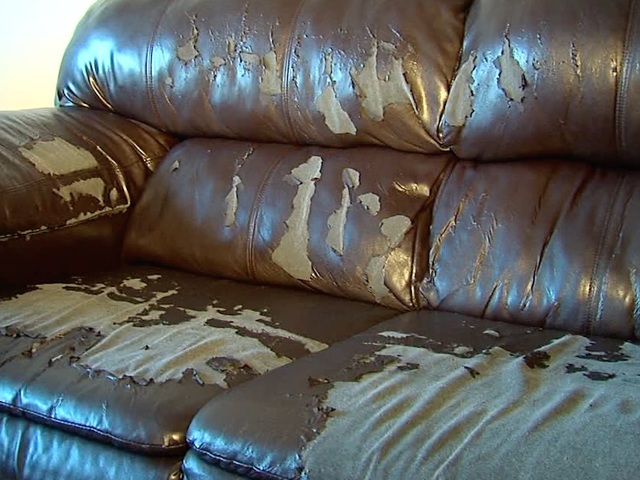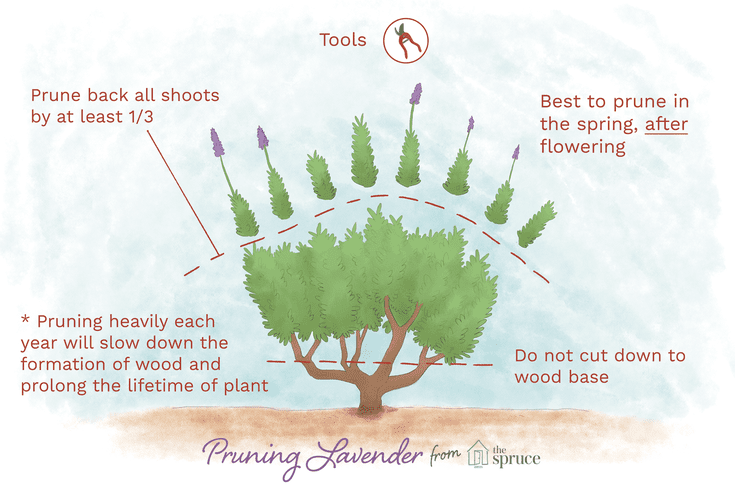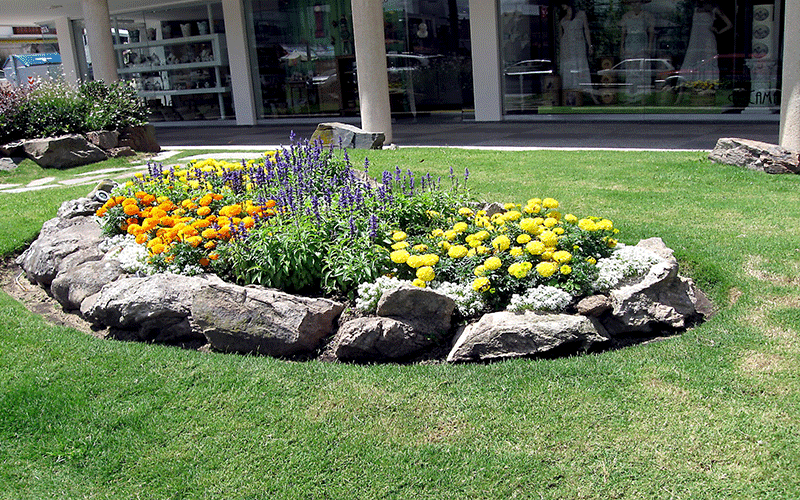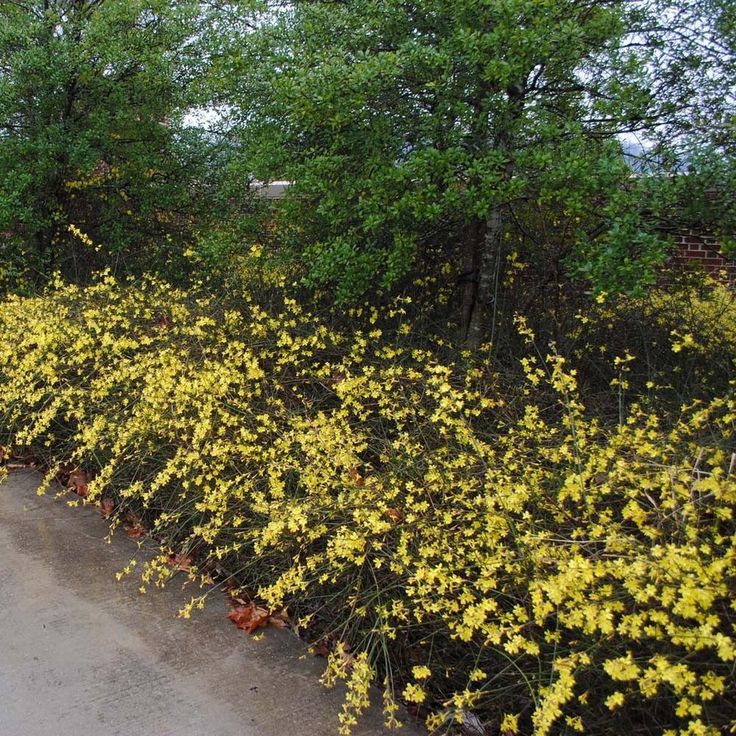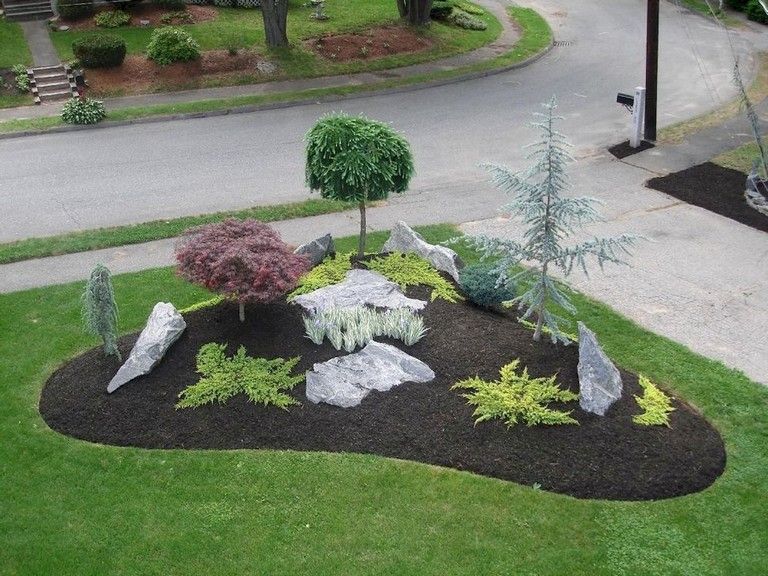What are hardiness zones
What All Home Gardeners Need to Know
Photo: USDA
Sometimes called “growing zones” or “gardening zones,” hardiness zones refer to a map developed by the USDA that separates the United States into regions based on the average low winter temperatures.
Some plants will adapt to a variety of conditions, including soil type, watering fluctuations, and humidity differences, but most plants will only tolerate a specific degree of chill in the winter. That’s where hardiness zones come in—they list the average lowest temp in every area of the country, so gardeners can select perennial plants that will survive the type of winters common to specific regions.
RELATED: How To: Protect Plants from Frost
What are hardiness zones?The USDA Plant Hardiness Zone Map consists of 13 individual zones that take in all of the contiguous United States, plus Alaska, Hawaii, and Puerto Rico. The first zone lies at the coldest and northernmost areas of Alaska. In these regions, winter temps can dip as low as -60 degrees Fahrenheit. On the southernmost part of the scale lies Zone 13, where winter lows remain above 65 degrees Fahrenheit.
Zones represent low temperatures in 10-degree increments, and each zone is further broken down into two additional segments, “a” and “b,” representing 5-degree increments. Not all hardiness maps, such as the Arbor Day map, list all 13 zones, and they might not feature the “a” and “b” breakdowns, but they’re relatively similar in design.
Photo: istockphoto.com
What hardiness zones won’t tell you.Hardiness zone maps are essential for helping gardeners choose plants, but they’re not all-inclusive categories. Some vital factors that require consideration are not covered on a hardiness zone map.
- Maximum temperature: The average hottest summer temperature isn’t found on a hardiness map, but it might be vital to a plant’s survival. Gardeners should research the plant species to determine whether it will survive the heat in the region.
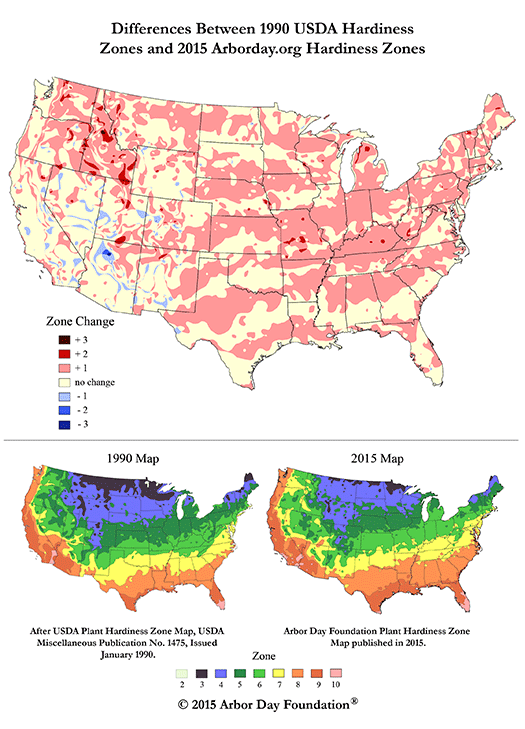
- Precipitation: Some plants require a lot of water, while others prefer a desert-type environment. The USDA Hardiness Zone map does not include average precipitation amounts.
- Average frost dates: Planting too soon in the spring could result in the need to cover plants at night if temps dip below freezing. Likewise, gardeners might extend the fall growing season by covering plants or bringing them into a greenhouse. Average first and last frost dates can be found on The Old Farmer’s Almanac by ZIP code.
Photo: istockphoto.com
Typical hardiness zones by region:
For a closer look at different regions, the USDA offers an interactive tool that allows users to see a compilation of hardiness zones in one of five general regions of the contiguous states.
- North Central: From the northern border of the U.S., ranging as far west as South Dakota, as far east as Illinois, and taking in Kansas and Missouri, the North Central region of the nation encompasses four hardiness zones, from 3a to 7b, with minimum winter temps ranging from -40 to -15 degrees Fahrenheit.
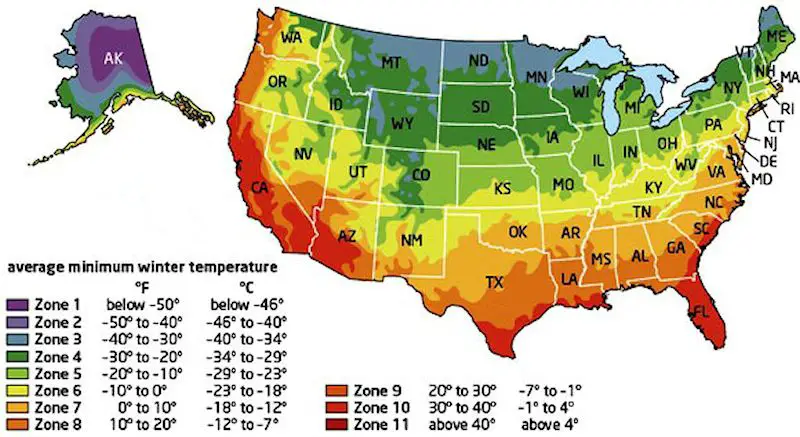
- North East: Following the eastern seaboard from Maine to Virginia and extending as far west as Kentucky and Michigan, the North East region includes portions of five zones, ranging from 3a at the northern border to 8a at the southernmost tip of Virginia (-40 to -15 degrees Fahrenheit).
- North West: This hardiness zone takes in all of Montana and Wyoming and then extends west to the western seaboard, and features a wide range of hardiness zones, from 3a in parts of Montana to 9a along the coast of Oregon and Washington (-40 to -10 degrees Fahrenheit).
- South Central: Featuring just four states, Texas, Louisiana, Arkansas, and Oklahoma, the South Central hardiness region encompasses zones from 6a in the northern areas to 10a at the southern tip of Texas (-10 to 15 degrees Fahrenheit).
- South East: Taking in Tennessee and Mississippi, extending from there east to the Atlantic Coast, and encompassing all states to the south, the South East region ranges in hardiness from zone 5b to 11a (-15 to 45 degrees Fahrenheit).
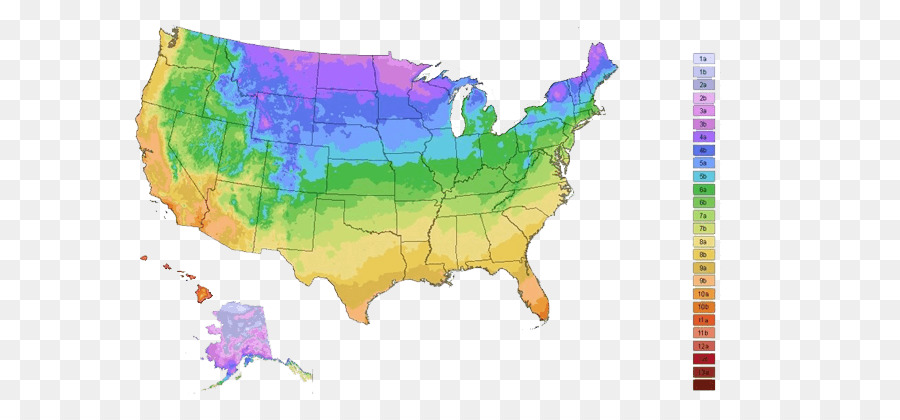
- South West: Including Colorado and the states to the west and south, the South West hardiness region features a wide range of zones, from 3b to 11a, or from -35 to 40 degrees Fahrenheit.
RELATED: Solved! The Best Time to Plant a Tree
Caption: istockphoto.com
How to use your hardiness zone.Use the hardiness map to find the average lowest winter temperature in your community and then choose plants that will survive that temp. To simplify the process, most commercial greenhouses provide detailed plant labels that list suitable hardiness zones, the lowest temperatures the plants can survive, and other vital information, such as whether they will grow better in the sun or shade.
Use the zone map as one factor in choosing a plant. However, don’t forget to check off all the boxes on its other needs.
Photo: istockphoto.com
When in doubt, opt for native plants.Plants that are indigenous to an area are always good choices.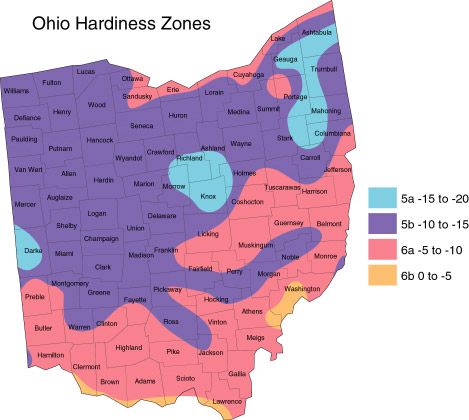 These native plants are well suited to the average minimum winter temps and the typical amount of rain, type of soil, and average summer heat in the region.
These native plants are well suited to the average minimum winter temps and the typical amount of rain, type of soil, and average summer heat in the region.
In addition to being good options for thriving in the area, native plants also play a vital role in xeriscaping, the practice of growing plants that do not require a lot of extra water, fertilizer, or pesticides, because they’re well adapted to the region. In this way, using native plants will help conserve water and cut down on the number of chemicals introduced in the environment.
RELATED: 34 Amazing Plants That Are Native to North America
What's Your Planting Zone? | USDA Plant Hardiness Zone Map
Know your zone! This is the first step to gardening. By understanding your USDA Hardiness Zone or Canadian Planting Zone, you can choose plants that can survive and grow year after year in your area. We’ll explain what planting zones are all about, how to use this information, and links to the latest maps.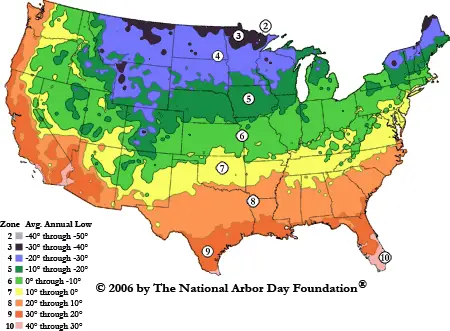
What Are Planting Zones?
Obviously, not every perennial, shrub, or tree grows and thrives in every climate. When choosing plants for your garden, it’s important to select varieties that can survive and thrive year-round in your area, especially in regions where extreme winter temperatures are normal. The plant must tolerate year-round conditions, such as the lowest and highest temperatures and the amount of rainfall.
The two most commonly referenced hardiness zone maps are those produced by the U.S. Department of Agriculture (USDA) and Natural Resources Canada (NRC). Different measures are used to create each country’s map, as explained below.
Note that planting zones are a guide, not absolute, especially if you live in a microclimate. These are tiny “pockets” which most commonly occur in areas with steep elevation changes, a body of water, or urbanization. They may be warmer or cooler than the surrounding zone. Learn more about microclimates.
Find Your USDA Planting Zone
The USDA Plant Hardiness Zone Map is the standard by which gardeners and growers can determine which plants are most likely to thrive at a location. The map is based on average annual minimum winter temperatures of each region and divided into thirteen distinct 10ºF zones, which are further divided into sub-zones of 5°F.
The map is based on average annual minimum winter temperatures of each region and divided into thirteen distinct 10ºF zones, which are further divided into sub-zones of 5°F.
Most plants that you buy are marked with a hardiness zone number. The label will identify the zones in the U.S. where the plant can thrive.
The USDA map is color coded to make it even easier to see where your area falls. A sample map of the USDA Plant Hardiness Zones is below. Click here to go directly to the USDA website and see a map of your state’s zones.
How to Use Your Planting Zone
Planting zones are most useful to gardeners growing perennial plants, since perennials are meant to live beyond just one growing season. Perennials need to be able to survive winter in your area, so it’s important to know how cold it typically gets in your area and whether a particular plant is hardy enough to survive those temperatures.
Perennial flowers, shrubs, and trees grow best when planted in the appropriate zone.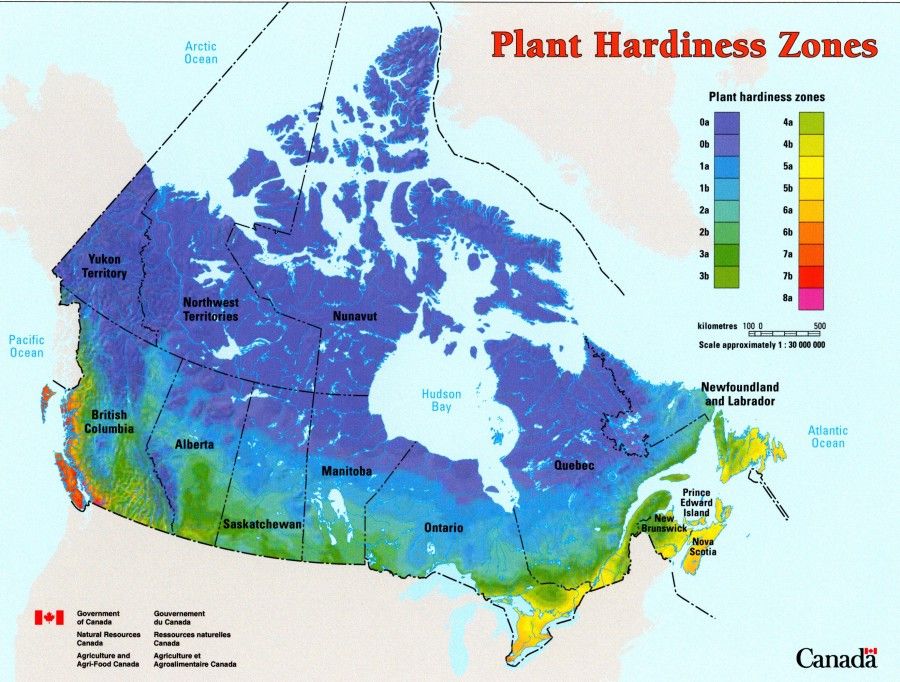 You’ll find that winter damage occurs most often when plants are out of their range or “comfort zone.” When you choose plants for a garden or landscape, avoid selecting plants that are only marginally hardy for your region; that’s when you’ll see winter damage, poor growth, and a reduction in flowering.
You’ll find that winter damage occurs most often when plants are out of their range or “comfort zone.” When you choose plants for a garden or landscape, avoid selecting plants that are only marginally hardy for your region; that’s when you’ll see winter damage, poor growth, and a reduction in flowering.
Planting native species is a surefire way to achieve a stable garden. Native plants are which occur naturally where you live! So, naturally, they will thrive in their habitat. See our article on natural landscaping.
For annual plants, like most vegetables and some flowers, it’s far more important to pay attention to things like the length of your growing season and the typical dates of your first and last frosts. (See local frost dates here.) Because annuals are only meant to last the length of one growing season, planting zones don’t necessarily factor into the equation.
NRC Canadian Planting Zones Map
Unlike the USDA map, which is based only on minimum winter temperatures, the planting zones map produced by Natural Resources Canada (NRC) considers a wider range of climatic variables, including maximum temperatures and the length of the frost-free period. Because of this, the zones listed in the Canadian and US maps are not on the same scale, so keep that in mind before following one or the other!
Because of this, the zones listed in the Canadian and US maps are not on the same scale, so keep that in mind before following one or the other!
NRC also produces a map that shows plant hardiness zones for Canada based on the USDA extreme minimum temperature approach. Click here to see Canadian planting zone maps.
Since some Canadians will buy plants from the U.S., it may also be helpful to understand how to use USDA zones in Canada. As rule of thumb, add one zone to the designated USDA zone. For example, USDA zone 4 is roughly comparable to zone 5 in Canada. If you’re on the fence about a plant, always go one zone higher to be on the safe side and avoid disappointment!
Learn More
Another key part of successful gardening is knowing when your frost dates are. Find your local frost dates here.
What are your thoughts on planting zones? Are they accurate? Let us know in the comments below!
Plant frost resistance zones - what are they and why know them? Map and table of USDA zones.
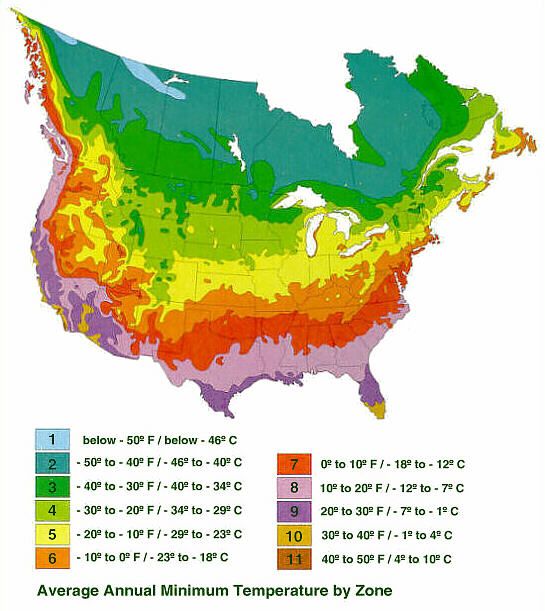 Photo - Botanichka
Photo - Botanichka More and more new (including exotic) trees and shrubs, fruit and garden crops appear in summer cottages. Passion for exotics does not always please the summer resident, although the sellers at the time of purchase assure that the plants are zoned and able to withstand any climatic hardships. Do not always trust empty words. The zone of its frost resistance will “tell” about the prospects for adapting the plant to the area of growth. What it is, and how to apply knowledge about the frost resistance zone of a plant in practice, we will describe in this article.
What are the frost resistance zones of plants?Contents:
- What is frost resistance and winter hardiness of plants?
- Who divided the world into "zones"? Brief historical background
- USDA Plant Hardiness Zone Chart
- How to use the frost resistance table?
- How to increase the frost resistance of plants?
What is frost resistance and winter hardiness of plants?
Often, when buying plants, summer residents complain that they do not take root well or do not take root at all, and some die after the first winter.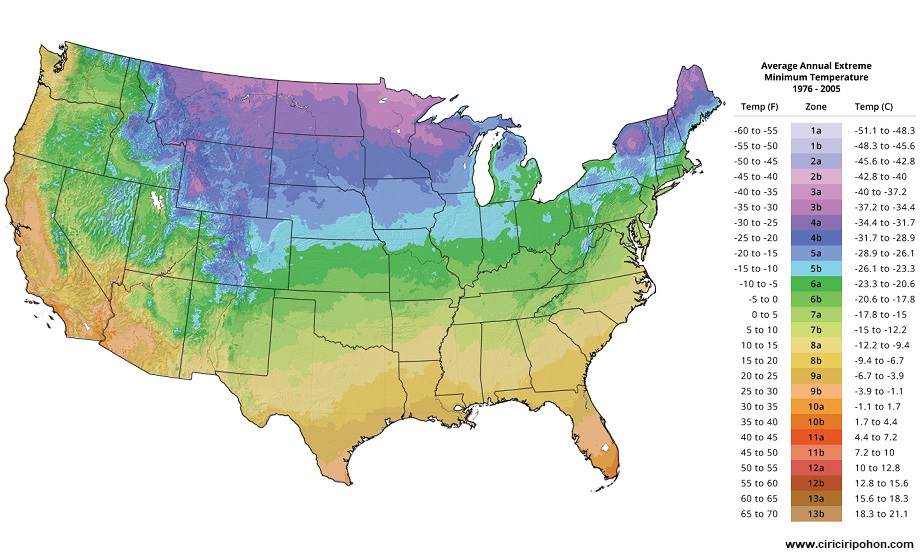 At the same time, proper care was provided to the plant and the right place was chosen. Something went wrong?
At the same time, proper care was provided to the plant and the right place was chosen. Something went wrong?
Accused of cheating sellers. Like, "slipped" low-quality goods. But are the sellers really to blame? Different regions differ significantly in climatic conditions. And the first thing to do to ensure the success of the purchase was to take an interest in the frost resistance zone of the plant. It is possible that it does not at all correspond to the environmental conditions in which you are going to plant your plant.
Do you know what temperature limits your geographical area differs from others? This data will help you understand which plants can safely grow and develop in your area, and which ones will need additional care (shelter for the winter, transfer to a warm apartment, to a closed balcony, to a winter garden or greenhouse, growing in greenhouse conditions). At the same time, you need to understand that frost resistance and winter hardiness are not the same thing.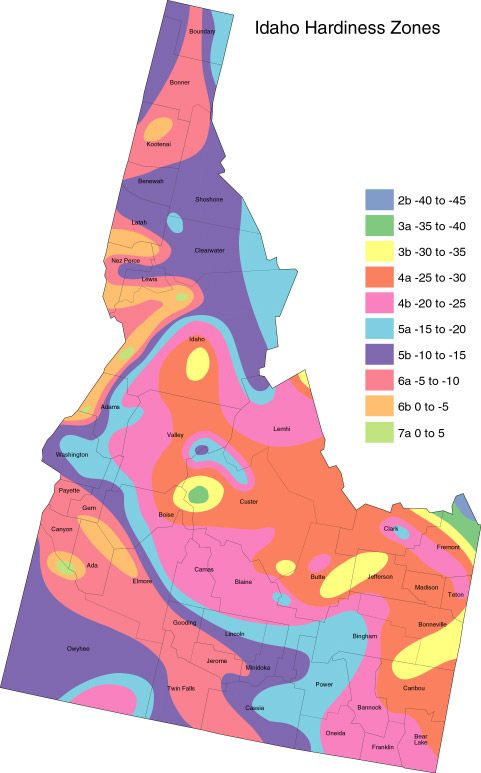
Frost hardiness is a term used to describe the ability of a crop to tolerate extremely low temperatures in winter. That is, the frost resistance of a plant is determined by the lowest temperature that it can survive in winter without additional shelter and insulation.
Winter hardiness - the ability of plants to withstand adverse temperature and other environmental conditions. Spring thaws are replaced by short-term frosts. And if some plants can easily withstand a stable twenty-degree frost even without shelter, then sharp temperature jumps from -10 ° C to “pluses” and back for many of them are certain death.
Frozen cell sap thaws, expands in volume and causes rupture of cells in woody tissues and plant bark. Cracks appear, into which snow, water gets, and then mold, fungal and other infectious microflora.
Plants can be protected in such unstable weather by temporary shelters (using caps, swaddling, coniferous spruce branches, mats and other types of insulation). Helps to survive the temperature fluctuations whitewashing trunks and skeletal branches at the end of winter. Whitewashed trees reflect the sun's rays well, not allowing the trunks to get very hot during the day, and to cool sharply at night in frost.
Helps to survive the temperature fluctuations whitewashing trunks and skeletal branches at the end of winter. Whitewashed trees reflect the sun's rays well, not allowing the trunks to get very hot during the day, and to cool sharply at night in frost.
All activities aimed at protecting plants from temperature extremes are called increasing winter hardiness. But their shelter for the winter is an increase in frost resistance.
Measures aimed at protecting plants from temperature extremes are called increasing winter hardiness. © peakpxThe USDA hardiness zones used around the world to determine the hardiness of plants do not fully take into account their winter hardiness. Therefore, they can be considered indicative, and you should not blindly rely on them.
Who divided the world into "zones"? Brief historical background
For the first time such a temperature-climatic scale was developed in the USA for the needs of agriculture.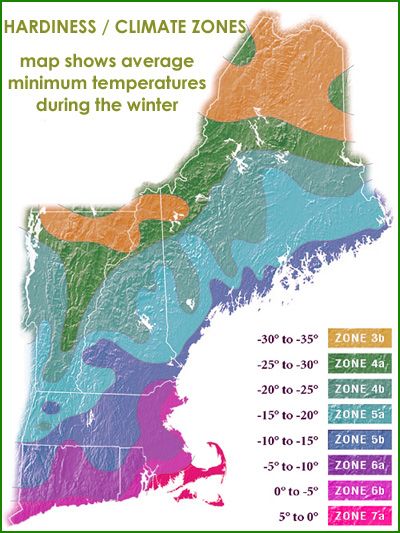 The innovation allowed the United States to describe its territory not only in terms of temperature ranges for crops, but also to designate tree and shrub crops that can grow and develop in these temperature ranges, that is, in certain zones.
The innovation allowed the United States to describe its territory not only in terms of temperature ranges for crops, but also to designate tree and shrub crops that can grow and develop in these temperature ranges, that is, in certain zones.
This breakdown into zones was called the USDA scale (after the first letters of the name of the US Department of Agriculture). Today, the regions of all countries of the globe are divided into frost resistance zones according to the USDA scale, indicating plant species adapted to live in such climatic conditions.
In Russia, and earlier in the USSR, work on plant frost resistance zoning began at the beginning of the 20th century. The temperature scale of frost resistance was supplemented by a list of tree crops (fruit and forest) found in climatic zones. The data obtained were combined by Professor A.I. Kolesnikov (1974) with co-authors who joined later in the multi-volume edition "Decorative Dendrology".
Work on the zoning of the territory of Russia, as in other countries, continues at the present time.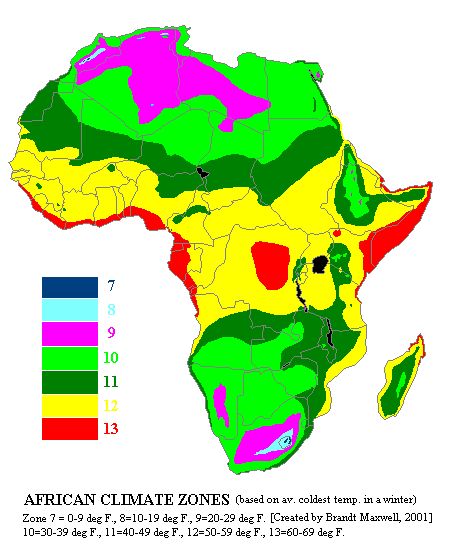 The main direction is the detailing of zoning, taking into account factors affecting the winter hardiness of plants: average annual temperatures (monthly and quarterly), average and minimum humidity of the region, annual precipitation, moisture evaporation, strength and constancy of wind (dry winds), soil type, daylight hours, dates of the first spring frosts and the first real frosts and others.
The main direction is the detailing of zoning, taking into account factors affecting the winter hardiness of plants: average annual temperatures (monthly and quarterly), average and minimum humidity of the region, annual precipitation, moisture evaporation, strength and constancy of wind (dry winds), soil type, daylight hours, dates of the first spring frosts and the first real frosts and others.
Due to additional or side factors within the climatic zone, its own microclimate is created, which changes (sometimes significantly) the average temperature. If side factors contribute to an increase in temperature, then plants from warmer zones can be grown in colder ones. But at the same time, it is imperative to comply with all the requirements of agricultural technology and measures to shelter plants for the winter period.
The climate has changed today, but so far there are no more detailed climatic maps in use by agricultural, forestry and other farms than regional ones, which is not enough for individual farms.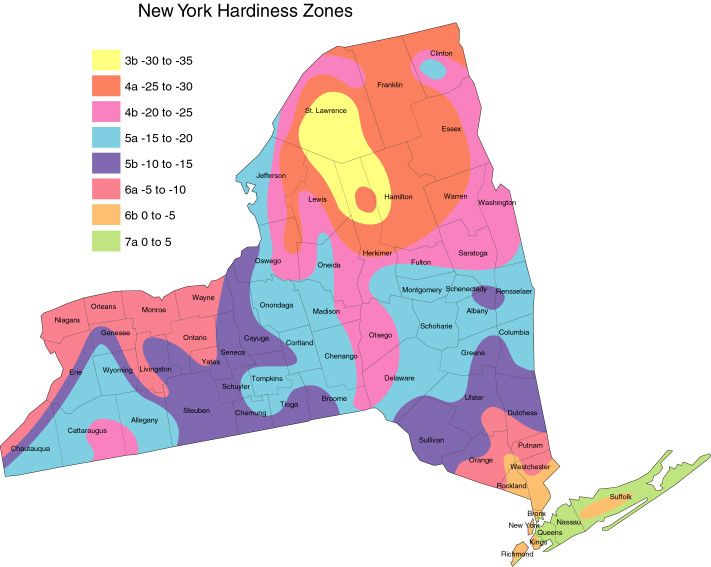 Therefore, all data used by agricultural enterprises and summer residents are considered indicative. However, it is climate maps or other reference materials that can most accurately answer the question of whether the plant you bought will survive in the winter and what conditions it will require to survive.
Therefore, all data used by agricultural enterprises and summer residents are considered indicative. However, it is climate maps or other reference materials that can most accurately answer the question of whether the plant you bought will survive in the winter and what conditions it will require to survive.
USDA Plant Hardiness Zone Chart
| Hardiness Zone | From | Up to | |
| 0 | a | −53.9 °C | |
| b | −51.1 °C | −53.9 °C | |
| 1 | a | −48.3 °C | −51.1 °C |
| b | −45.6 °C | −48.3 °C | |
| 2 | a | −42.8 °C | −45.6 °C |
| b | -40 °C | −42.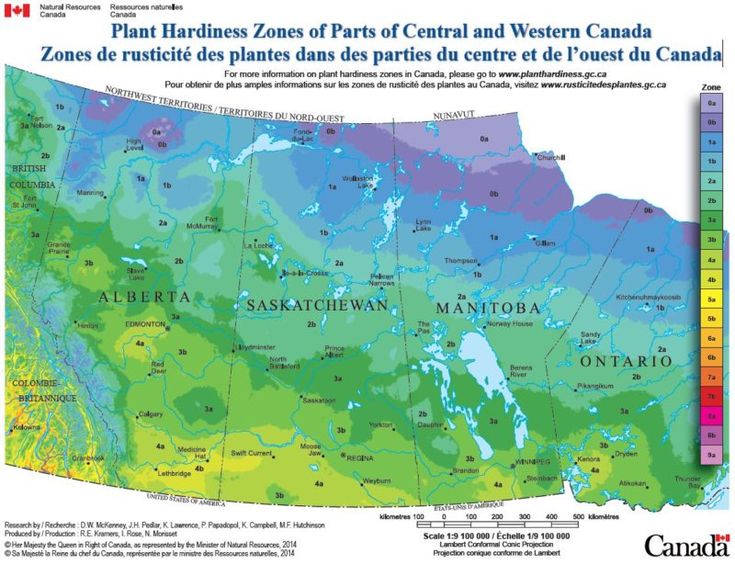 8 °C 8 °C | |
| 3 | a | −37.2 °C | -40 °C |
| b | −34.4 °C | −37.2 °C | |
| 4 | a | −31.7 °C | −34.4 °C |
| b | −28.9 °C | −31.7 °C | |
| 5 | a | −26.1 °C | −28.9 °C |
| b | −23.3 °C | −26.1 °C | |
| 6 | a | −20.6 °C | −23.3 °C |
| b | −17.8 °C | −20.6 °C | |
| 7 | a | -15 °C | −17.8 °C |
| b | −12.2 °C | -15 °C | |
| 8 | a | −9.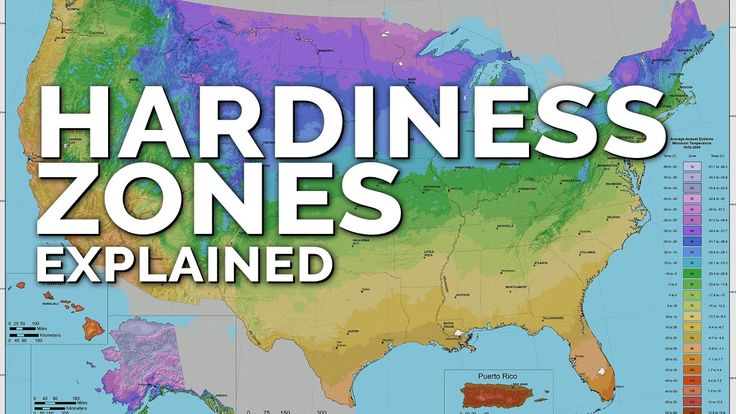 4 °C 4 °C | −12.2 °C |
| b | −6.7 °C | −9.4 °C | |
| 9 | a | −3.9 °C | −6.7 °C |
| b | −1.1 °C | −3.9 °C | |
| 10 | a | −1.1 °C | +1.7 °C |
| b | +1.7 °C | +4.4 °C | |
| 11 | a | +4.4 °C | +7.2 °C |
| b | +7.2 °C | +10 °C | |
| 12 | a | +10 °C | +12.8 °C |
| b | +12.8 °C | ||
Plant hardiness zones, originally developed by the USDA, show average annual temperature extremes (daily lows), not the absolute coldest temperatures experienced in the region.

How to use the frost resistance table?
For practical use, the scale of climatic zoning by USDA zones is convenient in the form of a table or map. In 2012, it was updated due to climate change over the past 30 years. The territory of Russia occupies zones from zero to 9. In total, there are 13 USDA zones in the world - from 0 to 12. At the same time, for more accurate information, each USDA zone has two subzones a and b , whose temperature limits differ within 2-3 ° С.
For example:
- Zone 1 - Central Siberia;
- Zone 2 - Southern Siberia;
- Zone 3 - Ural, Eastern Siberia;
- Zone 4 - Moscow region and most of Central Russia;
- Zone 5 - Moscow, St. Petersburg and the region, Vladivostok, Central Russia, the Baltic states, Minsk and most of Belarus, Kiev and central Ukraine;
- Zone 6 - Caucasus, Krasnodar Territory, Crimea, western and southern regions of Ukraine, eastern and central Poland, Czech Republic;
- Zone 7 - Southern coast of Crimea;
- Zone 8 - Dagestan;
- Zone 9 - Sochi.
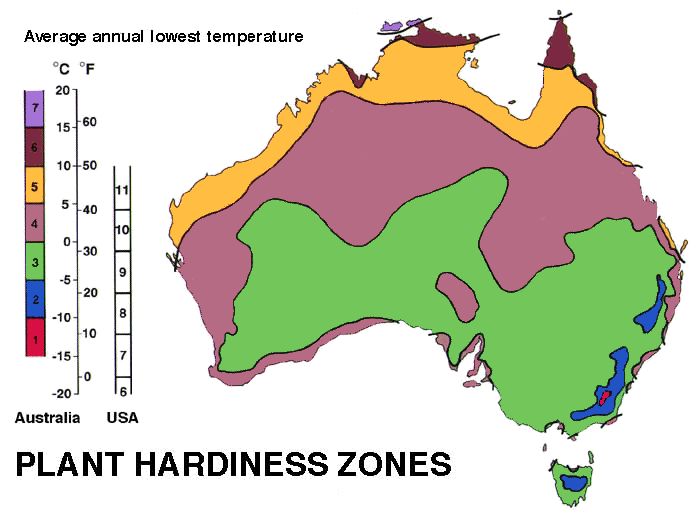
In addition to weather, many other factors influence the winter hardiness of plants. Under natural conditions, plants cannot grow strictly in a certain zone. For example, forest and other crops in the Novosibirsk region grow with equal success in the 2nd and 3rd zones. For Moscow and St. Petersburg, you can pick up plants that will successfully grow from the 1st to the 4th zone, although the 5th zone is the main one for them. Only in colder ones they will have to be covered for the winter, mulched, wrapped, covered with caps.
The above examples show once again that zoning according to temperature criteria is approximate and takes into account the minimum winter temperatures that the plant can withstand. When choosing which plant you can buy, you need to take into account not only temperature data, but also the local climate (amount of snow, duration of frost, wind strength, return frosts, etc.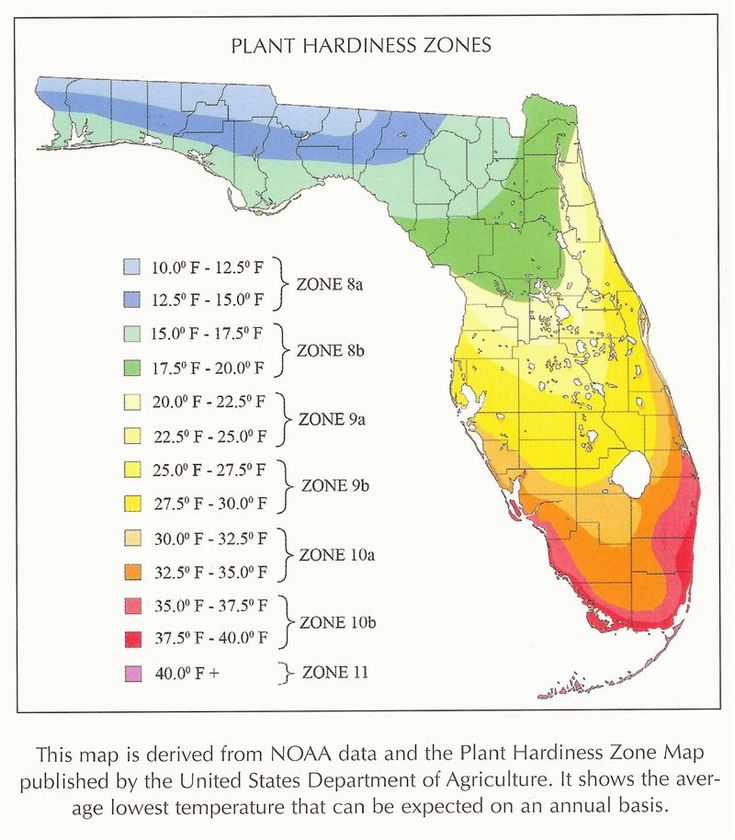 ). Some plant species can spread within 5-6 zones with a milder climate.
). Some plant species can spread within 5-6 zones with a milder climate.
When purchasing plants from a nursery, be sure to check the tag for the USDA zone in addition to zoning. What category (group) does culture belong to (main, additional or auxiliary)?
Our article "The best varieties of fruit crops for cold regions" will help you decide on the choice of fruit crops.
As for exotic plants, even with the same temperature zone of growth, be prepared for their acclimatization in new conditions, which means for shelters, protection from diseases and pests, and other additional work.
How to increase the frost resistance of plants?
The following factors sharply reduce the frost resistance and winter hardiness of plants:
- violation of agricultural practices for crop care;
- autumn moisture deficit;
- soil type and fertility;
- prolonged frosts during winters with little snow;
- epiphytotic damage to plants by various diseases, etc.
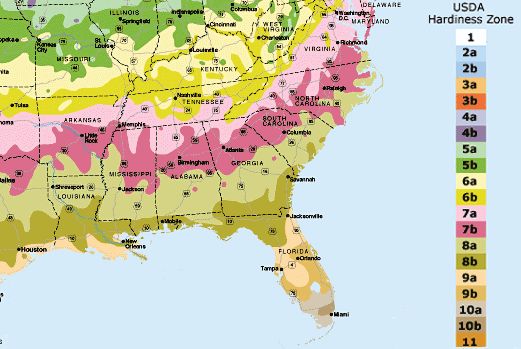
In order to increase the frost resistance of trees, shrubs, vegetables and other crops, it is necessary to keep the plants under the required conditions for the entire growing season: timely water, fertilize and protect against diseases and damage by pests. Do not feed plants in the second half of the growing season with nitrogen fertilizers, which, increasing growth, do not allow young shoots to ripen.
Autumn recharge watering (if necessary) should be sufficient. The depth of the soaked layer under the trees is at least 0.7-1.0 m, under the bushes - 0.2-0.4 m below the main roots. If the autumn is early, rainy, then water-charging irrigation can be omitted or the depth of soaking can be reduced.
Be sure to cover the lower part of the trees with snow, creating conditions for its preservation (so that the wind does not blow it away). Under snow, the root system is better preserved, and in rhizome plants, renewal buds.
Read the detailed material on how to properly cover heat-loving plants for the winter.
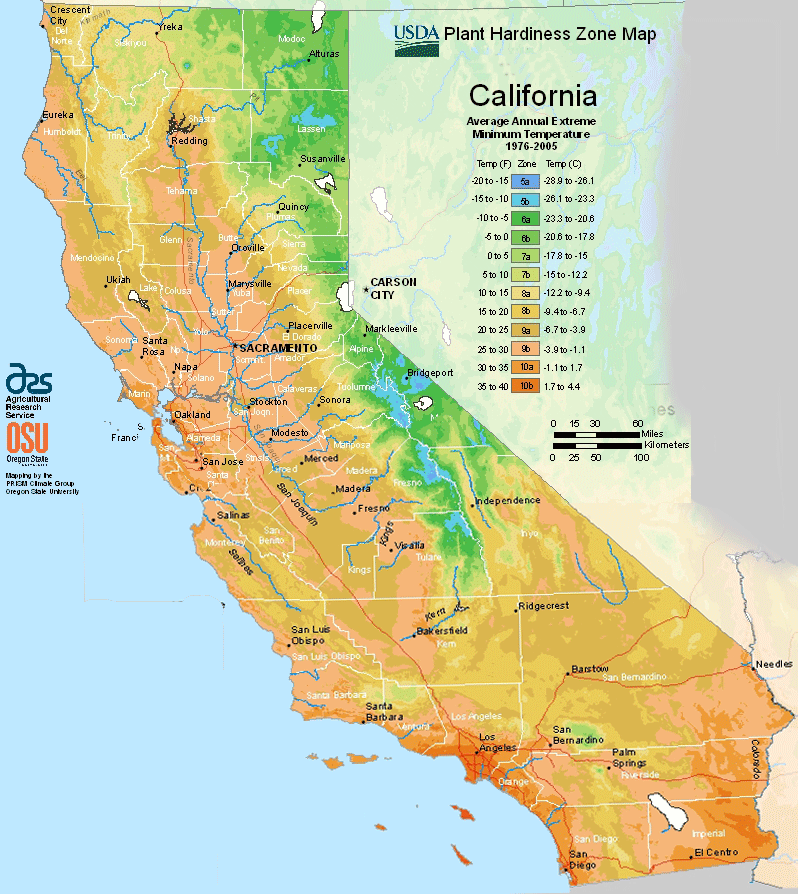
Frontier crops must be insulated for the winter, mulched, protected from the drying wind in the winter (wrapping, swaddling). From the scorching sun rays in early spring, it is imperative to whitewash the trunk and skeletal branches, and take other protective measures.
As they mature, young seedlings will acclimatize and harden off, and will not react so negatively to weather disasters. Properly selected planting material will eventually become a wonderful garden or park recreation area, will please with its exotic plants.
Hardiness zones and their role in crop production
Hardiness zones, or USDA-zones, are climatic regions of the planet suitable for the growth of certain plants. The zoning is based on an estimate of the mean annual temperature in degrees Celsius. Originally invented for the needs of American farms in 1927, this system was subsequently scaled to other countries. It is still successfully used today. In total, 13 winter hardiness zones are distinguished, on a scale from 0 to 12. In turn, they are divided into two subzones. Belonging to them characterizes the ability of a plant to adapt to temperature extremes within its climatic zone.
In turn, they are divided into two subzones. Belonging to them characterizes the ability of a plant to adapt to temperature extremes within its climatic zone.
Example of practical application in horticulture
You have probably noticed that in profile articles or on seed packages, in addition to the botanical name and the rules for planting and care, the frost resistance zone is usually indicated. How to correctly decrypt this information? In simplified terms, it means whether a perennial plant can survive the winter in your area and come back to life the next season.
There are 8 frost resistance zones on the territory of our country. At the same time, in addition to the average annual temperature, other factors must be taken into account. For example, the proximity of large cities "increases the degree" of the zone. So, the Moscow region belongs to the 4th zone, but Moscow is more correctly attributed to the 5th zone, since the average annual temperatures in the capital of the region are higher than in the region.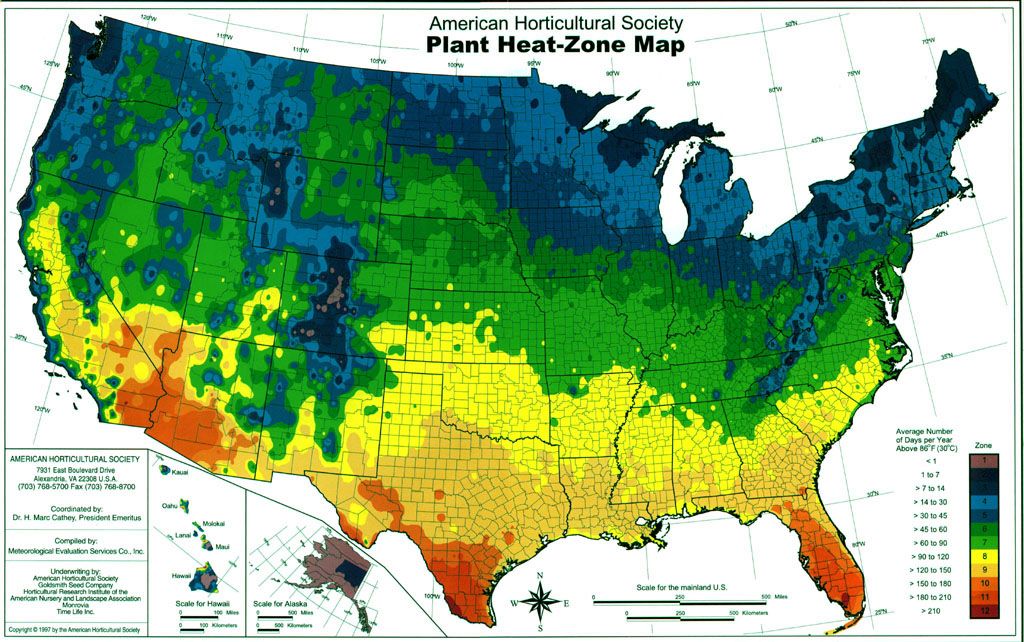
| Zone number | Temperature range, ̊С | Regions |
| 1 | -45.5 and below | Central Siberia |
| 2a | -45.5 - -42.8 | Southern Siberia |
| 2b | -42.7 - -40 | |
| 3a | -39.9 - -32.2 | Arkhangelsk, Kirov, Murmansk regions |
| 3b | -37.1 - -34.4 | Perm and Kamchatka Territories |
| 4a | -34.3 - -31.7 | Moscow, Yaroslavl, Kostroma, Vologda, Izhevsk, Penza, Ryazan, Chelyabinsk, Orenburg, Saratov, Samara regions, Tatarstan, Mari El |
| 4b | -31. | |
| 5a | -28.8 - -26.1 | St. Petersburg, Vladivostok, Voronezh region and other regions of central Russia |
| 5b | -26 - -23.3 | |
| 6a | -23.2 - -20.6 | Pskov, Smolensk, Bryansk, Kursk, Belgorod, Rostov regions |
| 6b | -20.5 - -17.8 | |
| 7a | -17.7 - -15 | Rostov region, Dagestan |
| 7b | -14.9 - -12.2 | |
| 8a | -12.1 - -9.4 | Krasnodar Territory
|
| 8b | -9.3 - -6.7 |
It should be borne in mind that not only average temperatures are critical for a plant, but temperature extremes, that is, the lowest and highest temperatures.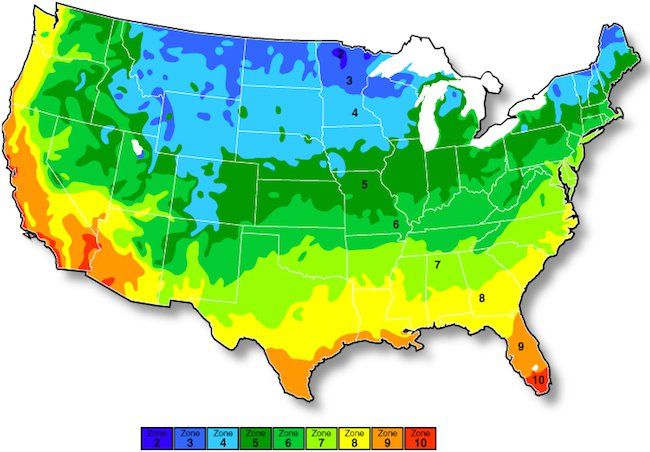 Belonging to one or another zone of frost resistance is not of key importance for heat-loving or annual plants.
Belonging to one or another zone of frost resistance is not of key importance for heat-loving or annual plants.
What other factors matter?
In addition to the resistance of horticultural crops to certain temperature extremes, other climatic features are taken into account when dividing into frost resistance zones. The acidity of the soil, the amount of precipitation, the height above sea level, the intensity and timing of the first frosts, and many other nuances matter. For example, Vladivostok and Astrakhan theoretically belong to the same frost resistance zone, but it is obvious that, other things being equal, the climatic conditions in the regions and, accordingly, the suitability for growing certain crops are strikingly different.
Unfortunately, there is no universal rule for planting in a particular area, but a competent grower can always be observant. For example, it is obvious that the local "aboriginal" cultures are the most adapted to your conditions.
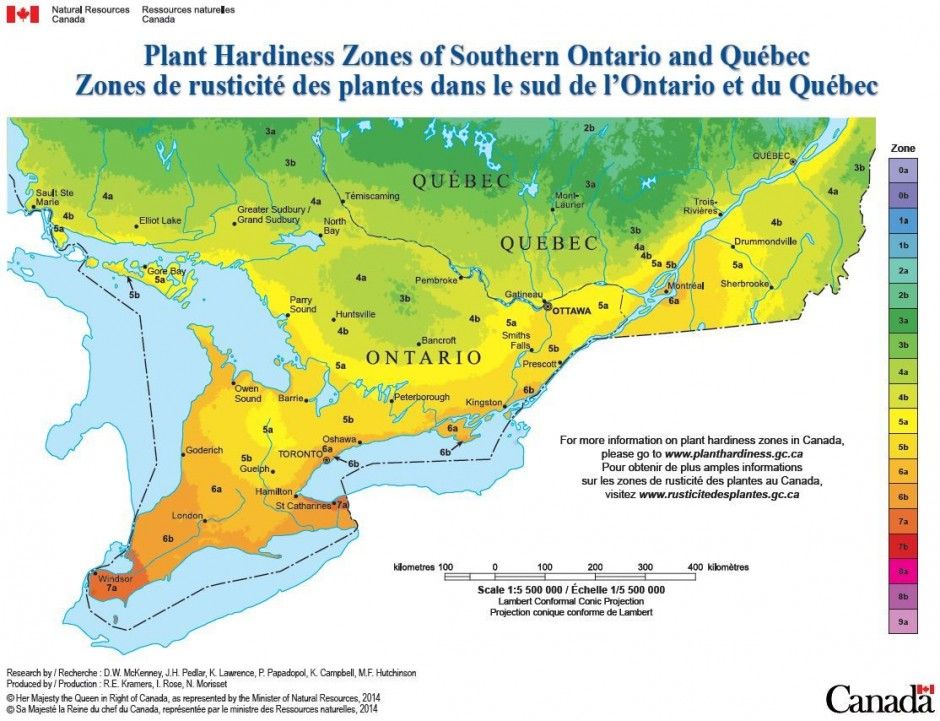 6 - -28.9
6 - -28.9 